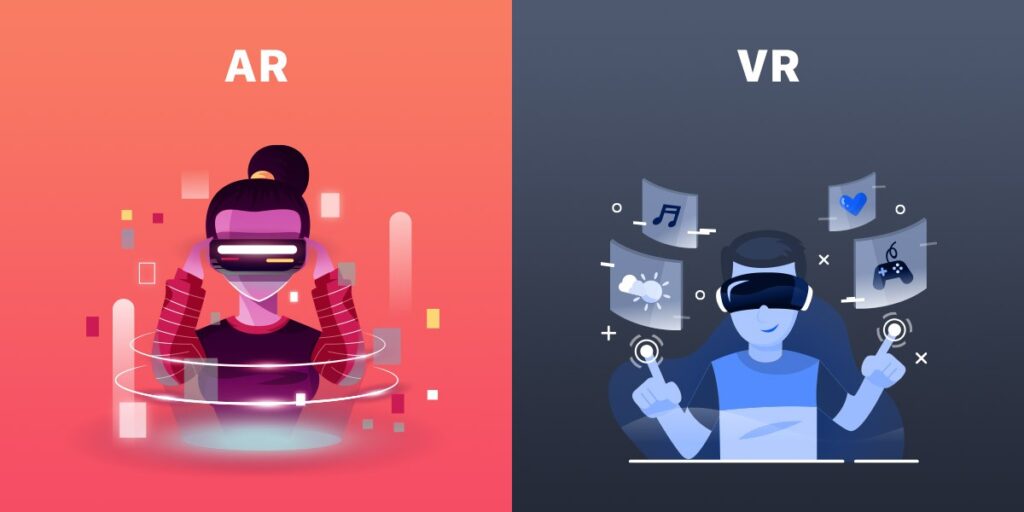The remarkable thing is how modern brands engage their audiences today, changing the creation of experiences. Brands today have revolutionized the way people are engaged in immersive, captivating manners that create a deeper connection to customers through technology. Augmented Reality (AR) and Virtual Reality (VR) are a duo of technology that has reformed the branding landscape.
From the gaming or entertainment roots of AR and VR, they have emerged today as powerful platforms for brands to captivate, engage, and leave a lasting impression on target audiences. Since both of these technologies blur the already thin divides between the real and digital worlds, it is an even greater opportunity for brands to create fully immersive experiences, engage customers with ultra-personalized interactions, and unleash the full potential of storytelling capabilities.
This article by FOR® summarises everything you need to know about the world of AR and VR and explores how these technologies are reshaping the branding landscape.
The Impact of AR and VR on Branding
Augmented Reality and Virtual Reality technologies today have taken branding to a completely new dimension; they create very new opportunities in customer engagement and the experience of a brand.
This section goes into the deep impacts that AR and VR are making on branding and taps into ways that enhance brand storytelling, create memorable customer interactions, and differentiate brands through innovative campaigns.
Enhancing Brand Storytelling with Immersive Experiences
Brands are using these two technologies to drive audience interest and experience their brand stories in an unmatchable manner. By utilizing AR and VR, a brand can take its consumers through the virtual world, lay digital content over their real surroundings, and create truly immersive storytelling experiences. With this kind of platform, brands can communicate with customers in a more interactive way that further triggers emotions and creates lasting memories in them.
Creating Memorable Customer Interactions through AR and VR
Today’s competitive landscape compels brands to find ways in which they can create the much-needed differentiation and yet hold on to customer stickiness. AR and VR technologies provide unique opportunities for engagement in the most mesmerizing manner possible, which leaves an indelible mark. A brand cuts through the noise and creates personally memorable moments with customers if it uses AR and VR to interact with customers, and therefore stands out from competitors.
Distinguish Your Brand with Revolutionary AR and VR Campaigns
As these technologies continue to take huge strides ahead, there is a burgeoning chance for brands to differentiate by using them in innovative ways. It’s with far-sightedness that brands have the possible power of creativity to come up with great AR and VR campaigns; that’s what would appeal to their target audience.
The days ahead will see deeper levels of impact of AR and VR technologies on branding as they continue to make advancements. Brands could use it for enhancing brand stories, creating memorable customer interactions, and embracing innovative campaigns that create better, deeper connections with consumers while keeping them ahead of their competitors. Harness the power of AR and VR within the larger digital landscape.
Leveraging AR and VR for Marketing Automation
Marketing automation is vital in a fast-changing marketing landscape for seamless processes and the production of personalized experiences on a scale. Augmented reality and virtual reality technologies offer, even in a class of their own, brilliant prospects for brands beyond ordinary marketing automation.
Thus, the section will expound on how brands could incorporate AR and VR in an omnichannel strategy, exploit personalization and targeting in AR and VR experiences, and finally, leverage insight from data and analytics in the optimization of AR and VR campaigns.
Integrating AR and VR into Omnichannel Marketing Strategies
For the full benefit of AR and VR, they must be well integrated into the marketing strategies followed by companies. By combining augmented reality and virtual reality with other digital channels like websites, social media, mobile apps, and offline touchpoints, brands can create immersive and cohesive brand experiences across multiple platforms. Here are some key considerations for successful integration.
Using AR and VR for omnichannel strategies will open up a very inclusive and unified brand experience, in turn harnessing the amplification power of marketing efforts.
Data Insights and Analytics for AR and VR Campaign Optimization
Data insights and analytics in AR and VR campaign optimization would allow brands to be able to measure performance, identify the improvements that need to be made, and drive better marketing outcomes. Personalization, targeting, and data insights drive brand experiences by optimizing the customer experience across all touchpoints, driving engagement, and improving marketing outcomes.
Conclusion
In this digital world, innovation is the key and hence brands are constantly finding new ways to capture consumer attention and foster meaningful connections. Augmented Reality (AR) and Virtual Reality (VR) are now looked upon as transformative technologies that open up exciting possibilities for brand marketers to lift their existing strategies and take a foray into immersive experiences.
Unlocking the power of AR and VR by brands will unshackle new dimensions of branding that can never even be imagined before. Those technologies can revolutionize how brands tell their stories, engage customers, and develop emotional connections. Brands can design highly interactive and memorable experiences using AR content in the real world or by taking users to virtual environments with VR.
If you want to Boost your online presence by integrating AR and VR into your brand. You can work with a specialist like FOR®’s Branding and Marketing Agency.


